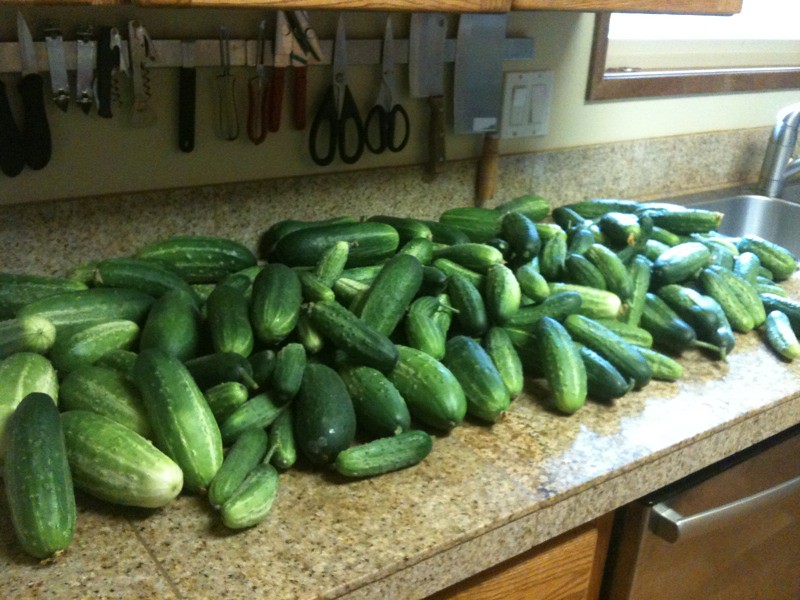
This is our second round of picking - we've already pickled some last week, eaten quite a few fresh and given several bags away to neighbors and friends.
- Posted using BlogPress from my iPhone
gardening with a sense of humus

In its first year it can grow from seed into a plant with a root system five feet deep and ten feet in diameter with many plant shoots. Each plant will store nutrients in the root system that can reach depths of greater than fifteen feet and will grow new plants wherever the root is broken.(emphasis is mine)
Each plant can produce as many as 500 seeds that can sprout for over 5o years.